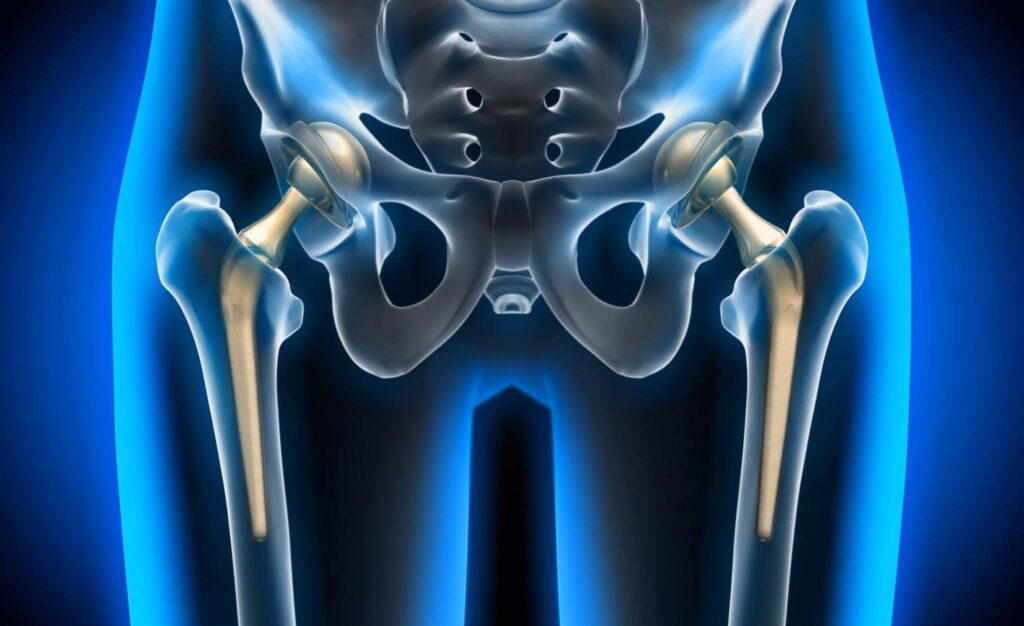Joint - Revision
Hip Revision
One of the Best Orthopedic Doctor & Team In Ernakulam,Kerala
Hip Revision
Hip replacement is one of the most successful surgical procedures which enables people to live more active live without debilitating hip pain. Over time, however, a hip replacement can fail,due to a variety of reasons.
When this occurs, your doctor may recommend that you have a
second operation to remove some or all of the parts of the original prosthesis
and replace them with new ones. This procedure is called revision total hip
replacement.
Although both procedures have the same goals—to relieve pain and
improve function and quality of life—revision surgery is different than primary total hip replacement. Revision hip replacement is a longer, more complex procedure. It requires extensive planning, as well as the use of specialized implants and tools, in order to achieve a good result.
When Revision Total Hip Replacement Is Recommended
Implant Wear and Loosening
In order for a total hip replacement to function properly, an implant must remain firmly attached to the bone. During the initial surgery, the hip replacement components were either cemented into place or were “press fit” into the bone to allow bone to grow onto them. Sometimes, however, bone may fail to grow onto press-fit components. In addition, cemented or press-fit components that were once firmly fixed to the bone can eventually loosen, resulting in a painful hip
Infection
Infection is a potential complication of any surgical procedure,
including total hip replacement. Infection occurs when bacteria attach in andaround the surface of the prosthesis. Infection may occur while you are in the hospital or after you go home. It may even occur years later.
If a total hip replacement becomes infected, it can be painful and the implant may begin to lose its attachment to the bone. Because bacteria cannot be easily eliminated from a joint replacement with antibiotics alone, revision surgery is usually necessary.
In revision surgery some times the implants must be completely removed ,then the infected tissue is debrided and a temporary cement spacer is place in your hip. This spacer is treated with antibiotics to help fight the infection and will remain in your hip for several weeks . Intravenous antibiotics for several weeks is given to cure the infection.

FAQ
General Question
We help you clear up your doubts

Testimonial
See What Our Patients Are Saying About Us
Read their inspiring stories and schedule your appointment to start your own journey to better health!

Entrepreneur
Lorem ipsum dolor sit amet, consectetur adipiscing elit, sed do eiusmod tempor incididunt ut labore et dolore magna aliqua

Manager
Lorem ipsum dolor sit amet, consectetur adipiscing elit, sed do eiusmod tempor incididunt ut labore et dolore magna aliqua

HR Manager
Lorem ipsum dolor sit amet, consectetur adipiscing elit, sed do eiusmod tempor incididunt ut labore et dolore magna aliqua

HR Manager
Book Now
Make An Appointment
Get Back On Track With Your Health – Schedule Your Appointment Today!
Opening Hours
- 08.00 AM - 20.00 PM
- 08.00 AM - 17.00 PM
- 09.00 AM - 17.00 PM
- 09.00 AM - 18.00 PM
Stay Connected with Orthopedics Kerala
This website uses cookies to provide you with the best browsing experience.


Lorem ipsum dolor sit amet, consectetur adipiscing elit, sed do eiusmod tempor incididunt ut labore et dolore magna aliqua